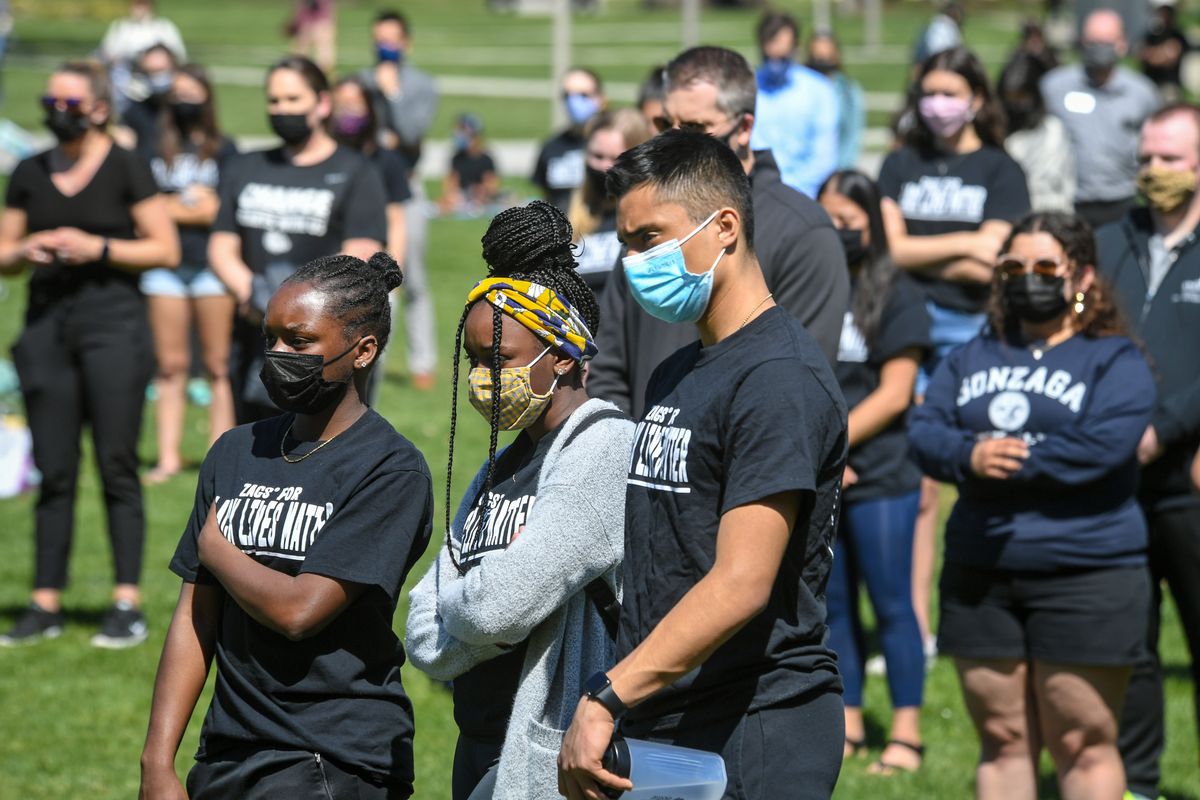Gonzaga University community reflects on Chauvin verdict: ‘We have work to do’


There were several moments of silence amid the crowd assembled Wednesday outside of Gonzaga University’s Foley Center.
A number of those gathered wore black for the occasion: a vigil following Tuesday’s conviction of former Minneapolis police officer Derek Chauvin in the death of 46-year-old Black man George Floyd. The 45-year-old Chauvin, who is white, was found guilty of second-degree unintentional murder, third-degree murder and second-degree manslaughter.
One particular silent moment during Wednesday’s gathering at Gonzaga concerned another death. Ma’Khia Bryant, a 16-year-old Black girl, was shot and killed by Columbus, Ohio, police Tuesday within minutes of the pronouncement of the verdict against Chauvin.
Body camera footage released Wednesday shows Bryant charging at two people with a knife before an officer, Nicholas Reardon, fired four shots from a few feet away.
“I’d like to ask that we bow our heads and have a moment of silence to reflect on the beauty of life that was (the) 16-year-old Bryant,” said Raven Maragh-Lloyd, assistant professor of communication studies, “and the long way toward justice that we have to go.”
Maragh-Lloyd’s sentiment was a general theme throughout the approximately half-hour vigil, which was organized by Gonzaga Student Affairs.
Attendees, a number of them clad in localized Black Lives Matter shirts, were encouraged to fill out note cards expressing how they could support the movement. They listened to several speakers from the Gonzaga community, including Phillip Tyler, Gonzaga’s crime prevention and education officer.
“This is not a time for celebration, but one for deep reflection. Reflection on why we, as a nation, are here again,” Tyler said. “We will celebrate when we have the absence of injustice, but this is not the time for celebration, as we still await justice for Daunte Wright.”
Black Student Union President Faith Ngae, who said she was emotionally exhausted Tuesday, spoke to how she took a nap following the reading of the Chauvin verdict. She woke up to the headline about the shooting involving Bryant, she said.
“My stomach turned,” Ngae told the crowd, “and I was reminded that Chauvin being found guilty is a win, but not justice.”
Ngae said afterward that events like the vigil are helpful particularly for the campus community at Gonzaga, a predominantly white institution, to gather and see “that the people around you are allies” working toward living in a just society.
Makayla Heiser, a 20-year-old sophomore, attended the vigil because she wanted to see just how many people would be there, saying she feels “there is a lot of words of solidarity, but not actions.”
Given the roughly 7,000 students enrolled at Gonzaga and the number of “black squares” she saw posted on social media last summer, Heiser said she would have liked to see more, but still appreciated the support.
“It’s good to come out here and see people that actually don’t look like me and they actually want the world to be a better place,” said Heiser, who is Black.
Kent Porterfield, vice provost for Student Affairs, said gatherings like Wednesday’s vigil acknowledge the significance of the moment, “but it’s also an expression that we’re committed to do more.”
When it comes to taking action, Porterfield said Gonzaga students have powerful voices they can use to help enact change through various means, such as involvement in political action or public policy groups.
“When we think about justice as a moral imperative, it’s a much broader issue,” Porterfield said. “It’s a system that has to change. And that system is policing, but it’s also equity and other aspects of life. We have work to do, as well, as a university.”